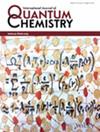Influence of Iodine Substitutions on the Photophysical Properties of Rhenium(I) Tricarbonyl Complexes With Pyridine Schiff Base (PSB-IHB)
Abstract
This theoretical investigation aims to evaluate the influence of iodine substitutions on the phenolic moiety of the pyridine Schiff bases harboring an intramolecular hydrogen bond (PSB-IHB) ancillary ligand within the monocationic. fac-[Re(CO)3(N,N)(PSB-IHB)]+ architecture on photophysical properties, particularly emission range. Optimized structures of two Re(I) tricarbonyl complexes (C1 and C2) were analyzed, revealing a distorted octahedral coordination geometry. Geometric parameters were compared with experimental data from analogous complexes. NBO analysis confirmed the presence of intramolecular hydrogen bonds (IHBs) in both singlet and triplet states, providing significant stabilization. Theoretical calculations predicted three distinct absorption bands for all complexes in dichloromethane, indicating substantial electronic delocalization between the pyridinic and phenolic rings via the azomethine group. These findings underscore the crucial role of delocalization and donor–acceptor interactions in stabilizing Re(I) tricarbonyl complexes and their impact on photophysical properties. Emissions calculated for the C1 and C2 complexes were observed within the range of 632–643 nm. The presence of IHBs was found to be essential for modulating photophysical properties, with emissions attributed to ligand-to-ligand charge transfer transitions.


 求助内容:
求助内容: 应助结果提醒方式:
应助结果提醒方式:


